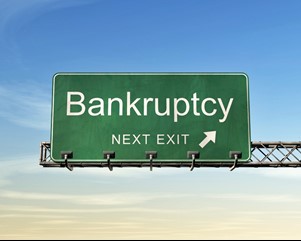Bouncing back from bankruptcy is easier than you may think -- if you follow these steps.

May 8, 2018 – By Brian O'Connell

In fact, more than 40% of Americans have a credit score of over 640 one year after filing for bankruptcy, 65% of bankrupt Americans see the same score (at least) three years after a bankruptcy.
Here are some additional chestnuts from the LendingTree bankruptcy study:
- 43% of people with a bankruptcy on their credit file have a credit score of 640 or higher within a year of the bankruptcy. Within two years of bankruptcy, 65% have a credit score above 640.
- A typical $15,000 auto loan incurs an extra $2,171 in borrowing costs for those seeking offers less than a year after bankruptcy, but just $799 for those who wait at least two years after bankruptcy.
- Borrowers who have a three-year-old bankruptcy and apply for a mortgage see an offered APR that is 19 basis points higher than those without a bankruptcy. The higher the APR, the higher your borrowing costs will be.
- Mortgage borrowers with scores between 720 and 739 three years after bankruptcy were offered similar APRs to those without bankruptcy, indicating a strong credit score can counteract the effects of a prior bankruptcy.
How did so many Americans get on the fast path to a bankruptcy rebound and how can others?
For starters, have a realistic, positive attitude and a clear and sustainable plan of attack to get on your feet again after a bankruptcy.
“The key to rebounding after bankruptcy is to recognize the events that got you there in the first place,” says Linda Worton Jackson a bankruptcy and restructuring attorney with Pardo Jackson Gainsburg in Miami, Fla. “Did you spend more than you earned? Was it an isolated event, like a health crisis or work termination, or a series of events that caused the financial hardship?”
Once you get a grip on how you wound up in bankruptcy, focus on moving forward. Job one in that regard is rebuilding your credit health.
“After a bankruptcy, it is difficult to build up credit,” Jackson says. “The best way to build your credit again is to pay bills on time and to show you can manage credit.”
A great way to do that is to obtain easy credit (like retail store credit cards, or gasoline credit cards), but never use them, so that you never have debt, Jackson says. “That will demonstrate you can handle credit,” she notes.
Next, make sure you don’t go right back to building up debt.
“Use cash rather than credit, seek ways to cut back on bills and expenses,” Jackson advises. “Set up a savings account and put money away for a rainy day. Retirement accounts are terrific if you earn enough to set money aside each month, even a small amount. Take advantage of employer matching and other opportunities to maximize savings.”
In listed form, Katie Ross, education manager at American Consumer Credit Counseling, offers her own step-by-step program to get back on firm footing after a bankruptcy.
- Create a budget. “A monthly budget is a must for any household. Budgets help avoid overspending and keep track of where your money is going,” says Ross.
- Set SMART goals. “That means “Specific, Measurable, Achievable, Realistic and Timely goals,” she adds. “Setting goals will help you make financial achievements.
- Rebuild credit. “Pay all your bills on time and pay more than the minimum on your bills,” Ross notes.
- Start an emergency fund. “To avoid being financially unprepared for whatever life throws at you, start an emergency fund to cover at least three-to-six (and ideally six-to-nine) months’ worth of expenses in case of the unexpected,” she adds.
- Seek financial literacy education or talk to a financial planner who can help you avoid falling back into unhealthy money habits, Ross says.
- Focus and finish. “Above all, don’t act on your wants, but needs instead,” she states.
Bankruptcy will be reflected on a credit score for upwards of seven years, but over time and with proper money management, the bankruptcy will slowly begin to have less of an impact on your financial situation, Ross notes. “With a bankruptcy on your record (and presumably a poor credit score), it will be more difficult in the months afterward to get a loan and secure low-interest rates,” she says.
“However, with some effort and determination, you can prove to be a good credit risk and your bankruptcy will slowly impact your financial life less and less.”
The takeaway? There is no reason not to recover quickly from a bankruptcy.
“The slate has been wiped clean,” says Jackson. “That said, your creditors will be reluctant to extend credit to you once they know that you filed a bankruptcy. The bankruptcy will remain on your credit for seven years, so anyone who runs your credit will see it.”
The key is to look at bankruptcy as a positive force.
“It will force you to use cash and live within your means,” she adds. “It will also make it more difficult to rent an apartment without a large security deposit, buy a car with financing, or obtain an American Express card.
